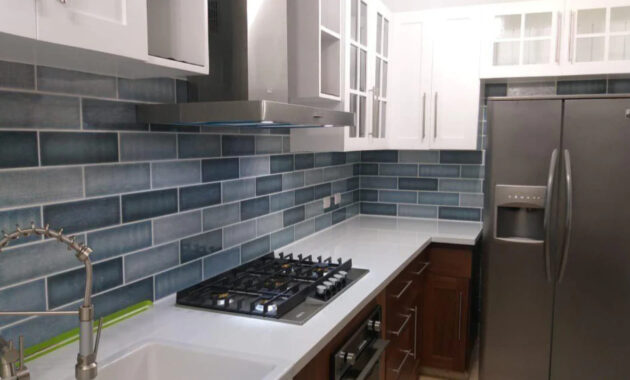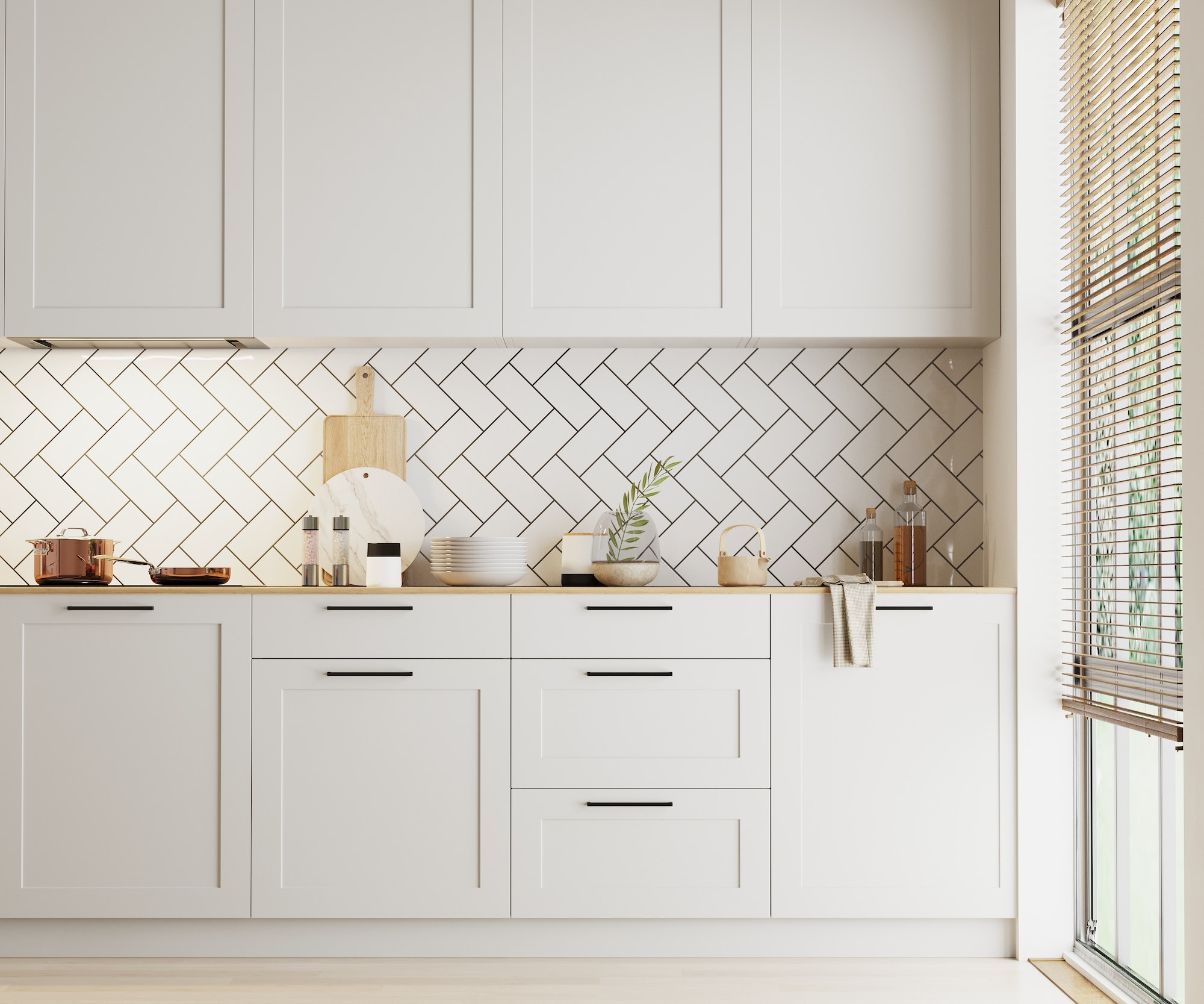When choosing tiles for your home, most people can struggle with the process. In addition to ensuring that you get the right tile for your look and price point, you’ll want to account for different factors when shopping for options in your local home improvement store or online. These factors include budget, appearance, durability, ease of maintenance, and more. That’s where we come in.
Tile is an essential element in almost every home. It’s more than just a surface — it’s a functional element that helps define the space and create continuity. For this reason, choosing the right tile for your home can be a daunting task. Luckily, there are many things to keep in mind when you’re shopping for tiles. Read on to learn how to shop for wall and floor tiles.
In this blog post, we’ll talk about why you should shop for tiled walls instead of just tiled floors — and what to remember as you do so.
What Type of Tile You’re Looking For
You might think that buying tiles is as simple as walking into your nearest tile store and picking out a few different tiles to take home and install. That, however, is not the case. There are multiple things to consider when buying tiles, from their durability and compatibility with your space to their suitability for the flooring application you want to use them for. Many reputable websites offer reviews and guides on different tile types and brands, providing all the information required to make an informed decision.
Before you shop for any tile, you have to decide what type of tile you’re looking for. While there are general types of tiling, there are also many subcategories that can be difficult to tell apart. You can’t simply pick up a tile and assume it will work in all situations. That’s not the case. The quality of a tile depends on several factors, including:
The pattern, design, and finish of the cut The size, finish, and style of the pieces The location of the concrete potholes, lines, or other natural elements in the room
- The type of flooring (colonette, lino, cork, etc.)
- The walls, floors, and other furniture in the room
- The placement of other decorative items such as lights, chandeliers, or mirrors
- The least-cost option in a category
There are many tile brands in the market today. Some of the most popular brands you should know and consider are:
- Cement tiles: Cement tiles are known for their durability. They are a great choice if you want tiles that can withstand the high impact of heavy activities. Cement tiles are available in many designs and textures, making them a versatile option. They are available in two finishes – polished and sandblasted.
- Ceramic tiles: Ceramic tiles are among the oldest and most traditional types. You can choose from a broad range of textures and colors, making them a versatile option. They are available in both glazed & unglazed variants. Ceramic tiles are great for high-impact areas due to their durability and resistance to wear and tear.
- Porcelain tiles: Porcelain tiles are another prevalent and versatile tile type. They are usually used for wall installations, but some brands also offer them in flooring variants.

Image Source: Mosaic Tile Outlet
- Natural stone tiles: Natural stone tiles make for beautiful flooring options and come in a wide range of textures and colors. Stone tiles are available in a variety of types, including granite, marble, slate, porcelain, and travertine. Slate tiles are usually used for wall installations or as a decorative feature because of their beauty and texture. They come unglazed, making them a natural and eco-friendly option. Slate tiles are usually used for wall installations or as a decorative feature because of their beauty and texture. They come unglazed, making them a natural and eco-friendly option.
Consider Your Space and Budget
Even starting shopping for tiles determines your budget and the amount of space you want to cover. If you’re installing tiles in your kitchen, you might want to consider durability ratings to ensure that they can withstand the high impact of kitchen activities.
If you’re installing tiles in your living area, you might want to go for something more visually appealing. Also, take into account the budget you want to spend. You can use that as a guide when you’re shopping for tiles. Also, check out the price of different tile brands and types to help you decide.
Tile Color and Shapes
Another vital factor to keep under the radar when shopping for tiles is the color of the tiles. Depending on the type of tiles of your choice, you can select from a wide variety of colors.
For example, ceramic tiles come in many colors, including beige, brown, blue, red, and black. You can also select different tile shapes to add visual appeal to your floor. Square tiles are one of the most common tile shapes. They come in a wide range of colors and textures, making them a versatile tile choice. Other common tile shapes include hexagonal, octagonal, and diamond-shaped tiles. Shapes can add an attractive visual appeal to your floor.
Check for Slip Resistance Ratings
Another vital thing to consider when shopping for tiles is the slip resistance rating of the tiles you want to install. A slip resistance rating measures how safe a tile is when preventing slips and falls. It is essential to select a tile type that has a good slip resistance rating, like ceramic, vinyl, or porcelain tiles.
Before you head out, make sure to take a sample tile with you so you can compare it with other tiles in the store. It helps you narrow down your options and make the proper selection. You also can check out the online tile store Mosaic Tile Outlet to find your best fit.
Account for Quality Differences Between Brands
If you’re struggling with choosing the right tile for your home, it’s worth taking some time to account for the difference between the brands you choose for your walls and floors. When you have difficulty deciding just which type of wall or floor you want, it’s essential to talk with a professional. It can be a hefty task to know which type of tile to buy.
Make sure the manufacturer’s quality control is up to standard, but you may be able to improve upon the standard if you go the extra mile and break the existing tiles in your wall or boardroom into smaller pieces. This can make the process easier, but it’s not cheap. Consider the cost of breakage, labor, and materials as you shop for the right tile.
When buying the right tile for your home, you need to account for the difference in price between different models. For example, a tiling that promises to paint your house red may cost more than one that promises to paint it white. You should also consider how durable that one is compared to others in your price range. When buying white or red tiling, you should also consider the type of wall or floor on which you intend to use it.
How to Find the Right Tiling for Your Home
When you’re choosing the right tile for your home, you want to make sure you’re buying the right one. When shopping for the right tile, finish the pattern and size; some features you need to consider. The factors may vary depending on the type of tile you’re looking for, but they’re often related to how durable the underlying materials are.
For walls, this might be a matter of how bright the paint is, but for floors, you want to make sure the underlying stone is of a darker color.
It’s vital to ensure you know the difference between the brands you want to buy. This is because when it comes to purchasing a new piece of home decoration, there are often many different manufacturers competing for your attention. You need to know which types of tiles you should consider buying so you can make the best buying decision possible.
When shopping for the right piece of home decor, consider these factors when deciding which style or model to buy.
- Finish: It depends on the type of floor you want, but it should be at least as necessary as the other flooring elements.
- Pattern: The pattern that makes up the walls or floor will affect the durability of the tile. If the pattern is too bright and simple, it will easily burn or stain the stone or paint. If the pattern is too formal and consistent, it will take up space in the room and make it harder for other decorative objects to fit in.
- Size: The size of the room will affect the amount of floor space you take up. If the room is too small, you’ll have to change the design to fit. Alternatively, a smaller room with more items can also allow you to put more space inside without affecting the other décor.
- Type of floor: The type of floor you choose will also affect the durability of your tile. Hardwood floors are generally considered to be very durable, while granite and marble have a much easier time breaking than concrete.
There are other certain things you can do to make sure you’re getting the right product.
- Search for a reputable company that has good reviews on its website and in trade magazines.
- Check out the product’s condition before buying it, especially if it has any scratches or dents that could affect its performance.
- Check out the manufacturer’s website for more information about their products’ specifications and features, including how they work and what kind of use they can handle best.
- Make sure you read the product’s user guide before using it for the first time, as this will help you know how to use it properly and make sure it works well together with your other products in your room or home space!
Conclusion
In order to get the right flooring for your home, you need to consider the materials and finish, and your final decision will depend on your budget, the number of sets you want to purchase, and the style or color of your home. Make sure to select tiles that are durable and long-lasting. Also, check for the product’s warranty information to get an idea of how long the tiles are expected to last.
Discover more from Futurist Architecture
Subscribe to get the latest posts sent to your email.



